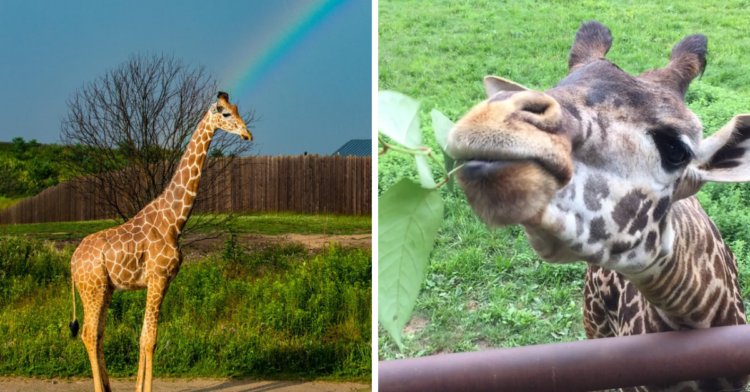You’d think that it would be hard not to notice a giraffe, right?
They’re not known for being terribly loud animals, but they’re certainly tall enough. And a curious one would certainly demand our attention if it bowed down and got in our faces.
Yet, the same apparently can’t be said for them as a species because they somehow made it onto the endangered species left without any widespread concern.
And we don’t want to be in a position where we only notice that they’re missing.
It should be noted that the giraffe’s current situation could be a lot worse.

According to the Smithsonian , the International Union for the Conservation of Nature changed its status from “species of least concern” to “vulnerable” last week.
This puts it on a slippery slope to endangerment, but it would be much worse if it was considered endangered, critically endangered, extinct in the wild, or, obviously, extinct.
But if nothing is done to reduce threats to giraffes and their habitats, that status will change way too quickly for comfort.

Its status as “vulnerable” means it faces extinction in the wild in the medium-term future. And with its numbers dwindling from 157,000 to 97,500 over the last 30 years, as The Guardian reported , that future looks grim for the giraffe.
By now, the animal has already vanished from seven countries in Africa, which include Nigeria, Senegal, Burkina Faso, Eritrea, Guinea, Malawi, and Mauritania.
So we know giraffes are in trouble, but why are they disappearing like this?

Part of the problem, unfortunately, is poaching. While it’s not unheard of for villagers with unstable access to food to hunt them for meat, the the more common issue seems to be the demand for their tails.
According to National Geographic , the tails are considered status symbols in some cultures and are sometimes used as marriage dowries.
However, there’s been some encouraging news on this front recently.

As Nature reported , the Rothschild’s giraffe found in Uganda and Kenya became endangered after their numbers dropped to about 500 during the late 2000s. However, thanks to some strategic re-introductions and species recovery plans, their numbers have since climbed up to 1,470.
This brought this giraffe species up from “endangered” to “near-threatened,” which is a bigger improvement than it sounds.
Sadly, even if all poaching stopped overnight, the giraffe would still be in serious trouble.

That’s because the giraffes’ habitats are being targeted by expanding cities and towns as much as the creatures themselves are being targeted by poachers.
And, as the Smithsonian reported , stopping this expansion will likely be more difficult than curbing poaching because that would involve interfering with powerful land developers and mining companies.
And a big problem standing in the way of that effort is how little attention the giraffe’s plight has received.

According to the Smithsonian , news of dwindling giraffe numbers has been overshadowed by the poaching experienced by rhinos and elephants, as well as the illegal trade of pangolins.
When other animals are in trouble, giraffes seem to slip through the cracks.

















































